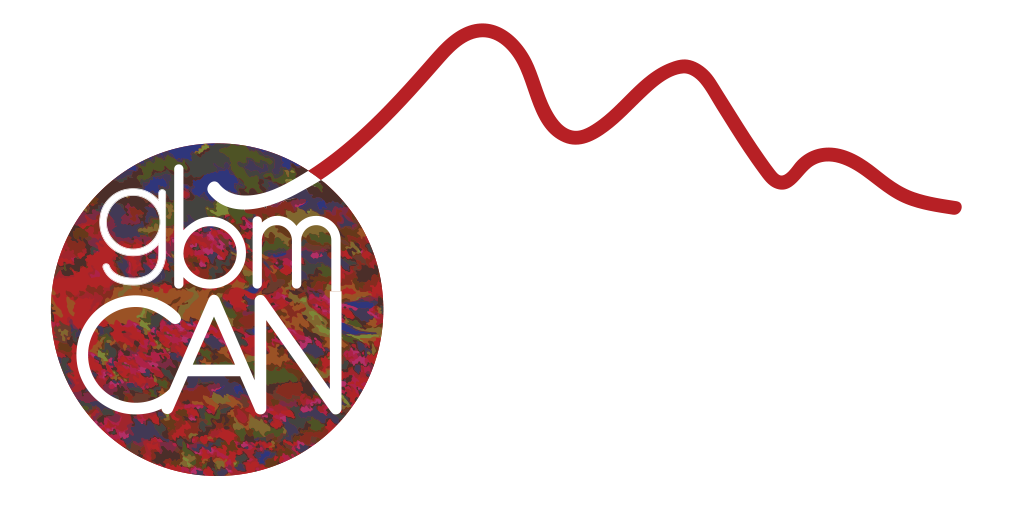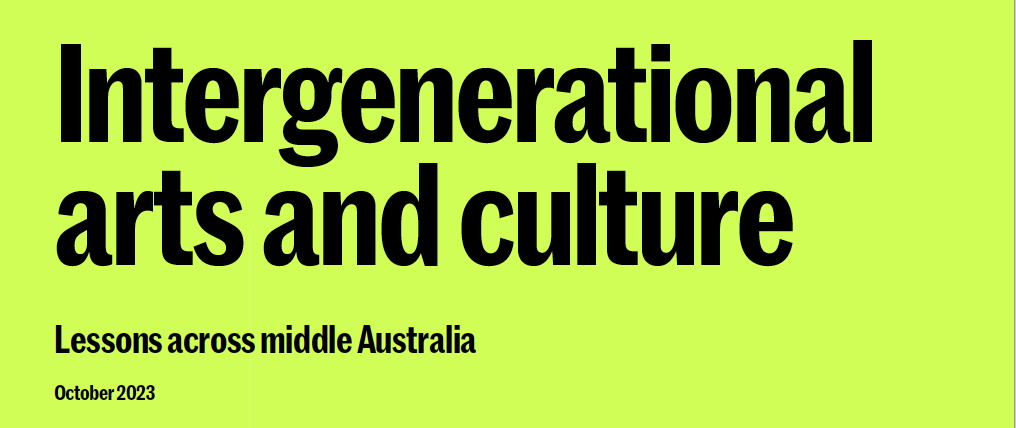ANA Report 2023
The ANA (A New Approach), a coalition of 11 philanthropic organisations, has published a report of the attitudes of ‘middle Australia’ (low and middle income households, living in the suburbs and regional areas) about the importance of arts and culture in their lives. These findings are especially important in times of trouble and anxiety in our community, and the rising concerns about mental health (anxiety and depression) especially among young people in the face of the housing crisis, cost of living pressures, climate change and cultural fragmentation evident in the national debate about the October 2023 Referendum on constitutional recognition of First Nations peoples through the Voice.
The ANA report finds that arts and culture:
- Are regarded as essential to being human—they have been part of human life as evidenced in ancient rock and cave arts.
- Provide the building blocks of community and place
- Drive wellbeing and productivity
- Foster innovation, imagination and expression.
What do we mean by Arts and Culture?
They can refer to expressions of beliefs and values, everyday creativity and ways of living. Arts and Culture can also mean the institutions, industries and individual actions such as written texts, performances, exhibitions and events. Our everyday lives are shaped by arts and culture in myriads of ways: the shape and design of our cities and houses; the food we eat; our spiritual beliefs and practices; our sense of justice and a ‘fair go’; the music we listen to; the films we watch; the way we care for our families; the way we think about the natural environment; the value we place on money and worldly success; our fears and hopes about the future; our sense of identity and purpose in life.
Since the official abolition of the White Australia Policy (1901-1973) and the Hawke Government’s establishment of a National Agenda for a Multicultural Australia with bipartisan support in the 1980s, Australians have largely embraced a national identity based on multiculturalism, comprised of three historic layers of cultural influence, expressed in the national 2021 census as:
- INDIGENOUS 3.8% – Ancient Indigenous Australia – dating back millennia, 65,000 years+
- ANGLO-IRISH 57% – British (Anglo-Celtic) colonial settlement Australia (White Australia) – dating back 230+ years to 1788
- OTHER – 18% Post WWII Immigrant Australia – non-British European immigrants immediately after WWII, followed by 22% successive waves from SE Asia, China, India, the Middle East, Africa and the Pacific including business and skilled migrants, refugees and asylum seekers.
The influence of non-European culture is growing, both through a renaissance of Indigenous creative activity in the visual arts, performing arts, film, writing and creative services, and in the growth of creative works from non-European migrant communities, especially in Sydney, Melbourne and Brisbane. Parallel to this has been the increasing presence of these communities in both news media coverage and political representation at the Local, State and National levels. Slowly we are also coming to terms with the idea that multiculturalism does not just mean racial tolerance of ethnic differences, but also the need to understand and respect different knowledge systems and practices. We discover this most easily through multicultural arts and cultural activities and creative works.
How are Arts and Culture important for community?
- Participating in and connection to culture brings the community together
- Cultural access, online or in person, increases access and helps foster connection
- Content of our arts and cultural activities should reflect Australia’s diverse population, including the stories of First Nations peoples.
- Arts and culture helps express identity and the diversity of thought that comprises their complex and nuanced sense of belonging, particularly in a multicultural Australia. We are a nation of increasingly hybrid identity, weaving together ancestral threads from different ethnic cultural traditions, beliefs, and ways of being, knowing and doing.
“There’s so many different experiences of being Australian. It’s not one shared, unified thing. It’s this whole different range of how people express being Australian” – young person from the Northern Territory.
“Without Australian arts, we would lose our sense of identity. You would lose your heritage as well and lose the connection to your country. You want to have something to be proud of and to pass it on [to] the future generations. It’s a very important thing”. – middle aged person from a regional Queensland town.
But what does this mean in the light of the rejection of recognising Aboriginal and Torres Strait Islander people in the Australian Constitution through a Voice in the 2023 Referendum? The No vote was strongest in Queensland (68.8%), where as David Marr’s history of his own ancestors involvement, the Qld Native Police massacred nearly 67,000 Indigenous people in the period up to 1901. Whose heritage, then, are we talking about? Whose heritage are we celebrating? How do we talk about the truth of the formation of modern Australia in 1901 from a federation of British colonies founded in the violence of convict culture and denial of Indigenous people’s very existence as peoples of this continent?
How do we make space to honour, respect, explore and understand the different cultural threads that make up Australia, including the history of colonial conquest and its consequences for Indigenous people and their descendants?
From their survey of the attitudes of Middle Australia across the generations, the ANA says it’s evident that everyday Australians hold nuanced perspectives about the role of arts and culture in their lives and its impacts on their communities.
Reflecting on the shared perspectives has re-inspired ANA’s hope about the cultural landscape that future generations of Australia could inherit.To facilitate and promote a cultural landscape that meets the needs of Australia’s growing and diverse population.
ANA puts forward the following opportunities for policy leaders at the national, state and territory and local levels to consider:
- Pursue the public good impacts of arts and cultural participation, as recognised by middle Australians, across all three levels of government, including through the Cultural Ministers’ meeting and, where appropriate, National Cabinet.
- Promote the integration of arts and culture into broader social and economic development strategies through an intentional cross-portfolio approach.
- Strengthen purposeful public investment to help ensure Australians have opportunities to access the benefits of arts and cultural participation and expression.
- Support industry, business and investment stakeholders to collaborate successfully at the national, regional and global levels, including through appropriate regulatory and policy settings and mechanisms for better long-term planning.
With the OECD calling on nations to view arts and culture as an investment for the future, not simply a cost, all governments have a key role to play in ensuring that Australians at every stage of life can access the benefits of arts and culture.

